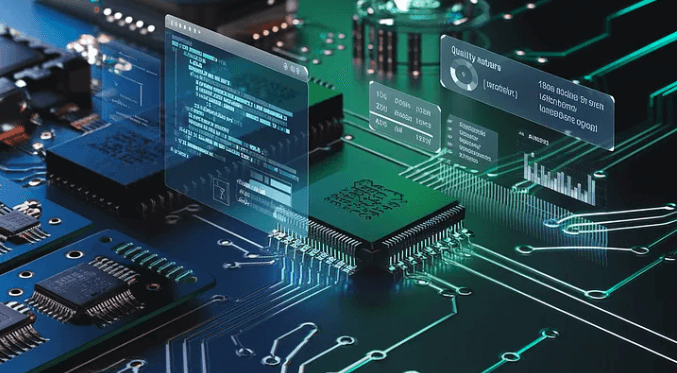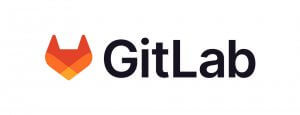Code Quality in Embedded Development: Leveraging GitLab’s Static and Dynamic Analysis Tools
Embedded development presents unique challenges. From tight hardware constraints to real-time performance requirements, every line of code in an embedded application must be carefully created and checked. For developers in this space, maintaining high quality code is essential. Bugs in firmware can lead to product recalls, security vulnerabilities, or even catastrophic failures in mission-critical applications.
GitLab, known as an all-in-one DevOps platform, offers tools to address these challenges. Its static and dynamic analysis capabilities are designed to help developers catch defects early, maintain robust codebases, and accelerate delivery timelines — all while meeting stringent quality standards.
Understanding Code Quality in Embedded Systems
Code quality in embedded systems involves more than just readability or maintainability; it also encompasses:
1. Reliability: The ability of the software to function under specified conditions.
2. Performance: Ensuring efficient execution given hardware constraints.
3. Security: Protecting devices from cyber threats.
4. Portability: Ensuring the code runs across different hardware platforms with minimal changes.
5. Testability: Facilitating debugging and validation.
Static and dynamic analysis are key components of ensuring these attributes throughout the development lifecycle.

GitLab’s Role in Static and Dynamic Code Analysis
GitLab integrates directly into the development workflow to provide insight through both static and dynamic analysis.
Static Code Analysis with GitLab
Static code analysis inspects the source code without executing it. It focuses on identifying:
– Syntax errors
– Code smells
– Security vulnerabilities
– Adherence to coding standards
Key Features
1. Built-In Code Quality Reports:
GitLab’s built-in code quality tools automatically run static analysis during merge requests. These tools flag potential issues and provide a summary of code quality metrics, enabling developers to make informed decisions before merging changes.
2. Customizable Linters:
GitLab allows you to integrate popular linters and static analysis tools like Clang-Tidy, Pylint, or SonarQube. For embedded developers, this means you can tailor the analysis to match the specifics of your programming language and hardware platform.
3. Automated Feedback:
Developers receive instant feedback when they push code. GitLab’s CI/CD pipelines run static analysis tools as part of the pipeline, ensuring that code issues are identified early and often.
4. Compliance Support:
Many embedded projects must adhere to strict coding standards like MISRA for C/C++. GitLab supports integrating tools that enforce such standards, reducing manual review overhead.
Dynamic Code Analysis with GitLab
Dynamic analysis involves testing code during execution. This is particularly important for embedded systems, as it reveals runtime issues that static analysis cannot, such as:
– Memory leaks
– Concurrency issues
– Unexpected runtime behavior
Key Features
1. Runtime Testing in CI/CD Pipelines:
GitLab’s pipelines can execute unit tests, integration tests, and system tests. By connecting to hardware simulators or test environments, you can validate how the code behaves under real-world conditions.
2. Fuzz Testing for Robustness:
GitLab supports integrating fuzz testing tools that provide randomized inputs to the software, helping identify edge-case failures or potential security vulnerabilities.
3. Hardware-in-the-Loop (HIL) Testing:
By integrating with tools that support HIL testing, GitLab enables dynamic analysis that includes real hardware. This is critical for detecting issues that arise due to hardware-software interaction.
4. Coverage Reports:
Dynamic analysis also includes generating code coverage reports. GitLab ensures that every piece of code added to the project is adequately tested, providing confidence in the overall quality.
Benefits of Using GitLab for Embedded Development
By leveraging GitLab’s static and dynamic analysis tools, embedded developers can achieve:
1. Early Bug Detection:
Issues caught during development are cheaper to fix than those found after deployment. GitLab’s tools integrate seamlessly into the CI/CD process to provide early feedback.
2. Improved Collaboration:
The merge request workflow in GitLab promotes collaboration by enabling code reviews and discussions about analysis results. Developers and QA engineers can work together to resolve issues quickly.
3. Faster Time-to-Market:
Automated quality checks reduce the need for manual reviews, accelerating the development process while ensuring high standards.
4. Enhanced Security:
Embedded devices are increasingly targeted by cyberattacks. GitLab’s tools help developers find and fix vulnerabilities before they reach production.
5. Compliance Readiness:
With support for integrating industry-standard tools, GitLab simplifies the process of meeting regulatory and compliance requirements.
Real-World Application: GitLab in an Embedded Workflow
Consider a development team creating firmware for an IoT device. The workflow might look like this:
1. Code Commit and Push:
Developers push their code to a GitLab repository.
2. Static Analysis Pipeline:
The CI/CD pipeline runs static analysis tools like Clang-Tidy or MISRA-compliant checkers. Any violations are flagged in the merge request.
3. Build and Dynamic Analysis:
The pipeline compiles the code and runs unit tests in a simulated environment. Tools like Valgrind check for memory leaks and threading issues.
4. Integration Testing:
The code is deployed to a hardware simulator or HIL setup, where integration tests validate system performance.
5. Final Review:
Developers review the automated reports from static and dynamic analysis before merging the code into the main branch.
This workflow ensures that quality checks are applied consistently and automatically, freeing the team to focus on innovation rather than firefighting.
Summary
GitLab’s static and dynamic analysis tools are a boon for embedded developers aiming to maintain high quality code while delivering projects on time. By integrating tools like GitLab into a CI/CD workflow, teams can automate quality checks, reduce manual effort, and ensure their software is reliable, secure, and meets performance requirements.
At 321 Gang, we specialize in helping teams implement streamlined workflows using tools like GitLab to ensure robust code quality, faster delivery, and compliance with industry standards. Whether you’re looking to integrate static and dynamic analysis tools, automate testing pipelines, or adopt DevOps principles for embedded systems, our experts can guide you every step of the way. Let us help you reduce risks, enhance collaboration, and achieve your development goals. Contact 321 Gang today to schedule a consultation and take the first step toward improving your embedded development process.


321 Gang | 14362 North FLW | Suite 1000 | Scottsdale, AZ 85260 | 877.820.0888 info@321gang.com
